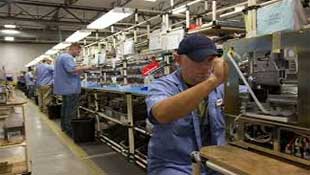| |
| |
4.1%
|
 |
That is the rate of revenue growth expected by US manufacturers in 2016, according to the new semi-annual economic forecast from the Institute for Supply Management, based on responses from a panel of supply chain executives that ISM polls for each report.
That level of growth would almost triple the anemic 1.4% growth rate the same panelists expect for 2015, and would require reversing the recent trend of manufacturing weakness, with the ISM purchasing managers index for November falling below the 50 mark that separates expansion from contraction for the first time in 35 months, falling to a low not seen since June 2009 at 48.6.
On a somewhat contradictory note, the manufacturing panelists on average expect capital spending to grow a weak 1% next year, versus a strong increase of 8.3% in 2015.
|
| |
| |
|
| |
| |
800
|
|
That's how many miles a bulk cargo ship carrying diesel fuel was from its destination in Portugal - three fourths of its journey from the US Gulf Coast - when it abruptly turned around and headed home few days ago. Why? Like a number of other ships recently, it found there was nowhere to store is diesel cargo, as storage tanks are filled to the brim amidst a world awash in oil. At least 250,000 tonnes of diesel are currently anchored off Europe and the Mediterranean seeking a discharge port, the Maritime Executive reported this week. "The idea is to keep tankers on the water as long as you can and try to find a stronger market." a trader told the publication. Of course, oil prices continued heading down, falling to the mid-$30 range this week. Who would have ever predicted such a stunning change in direction from 2008's oil price peak?
|
|





No comments:
Post a Comment